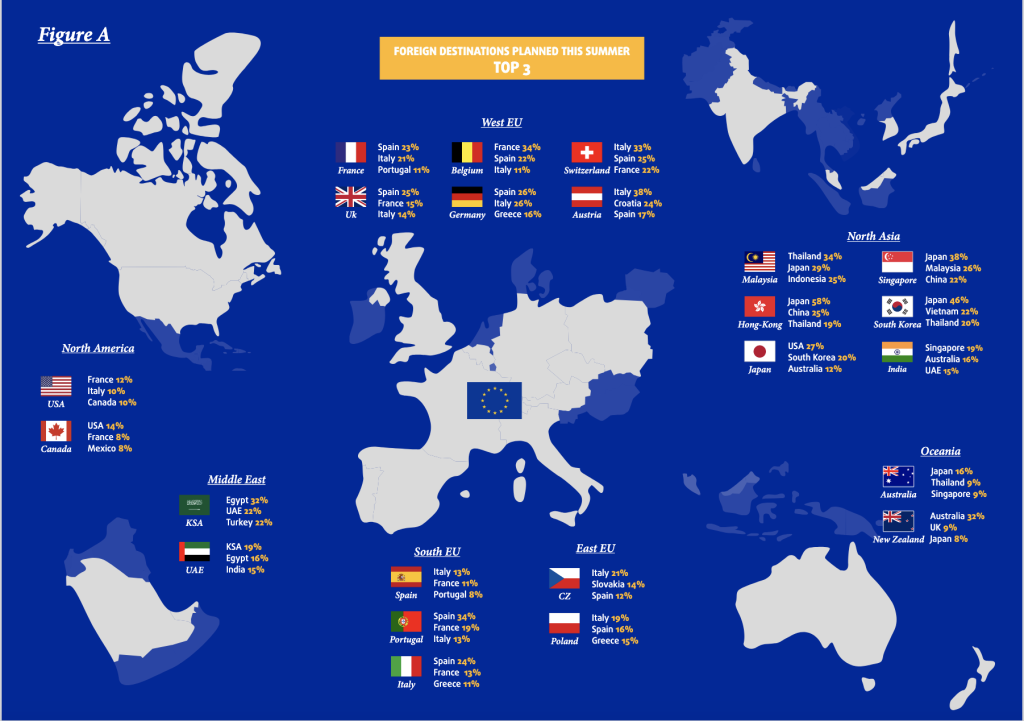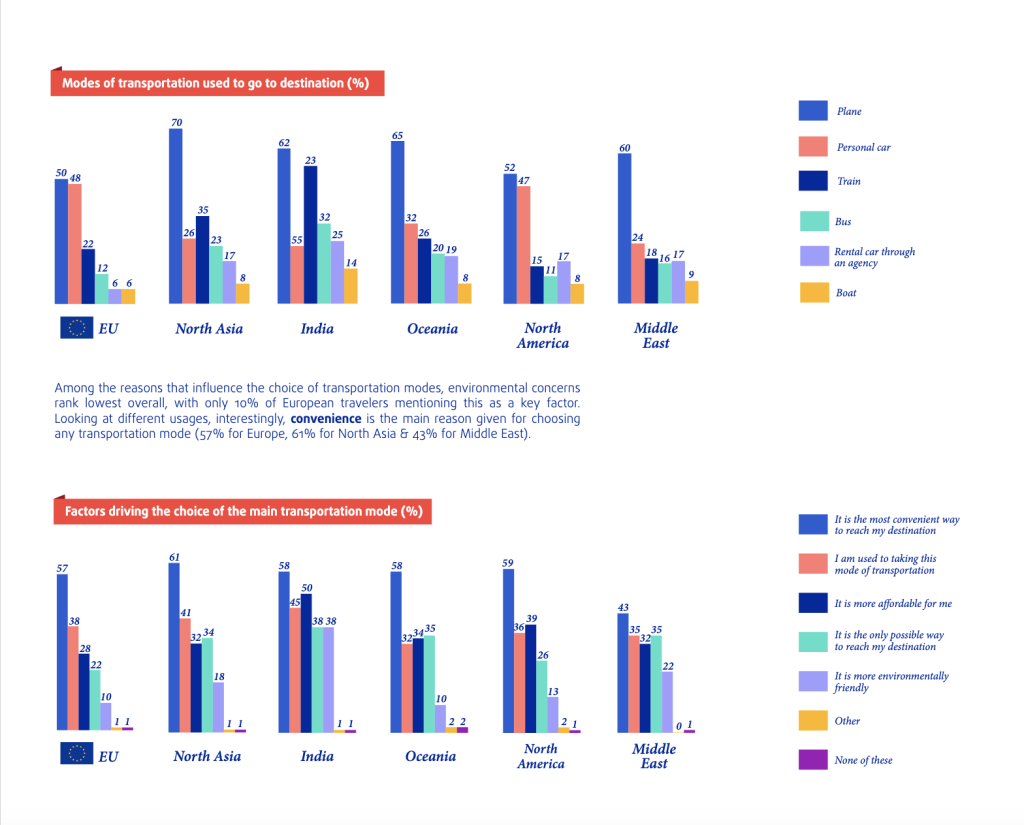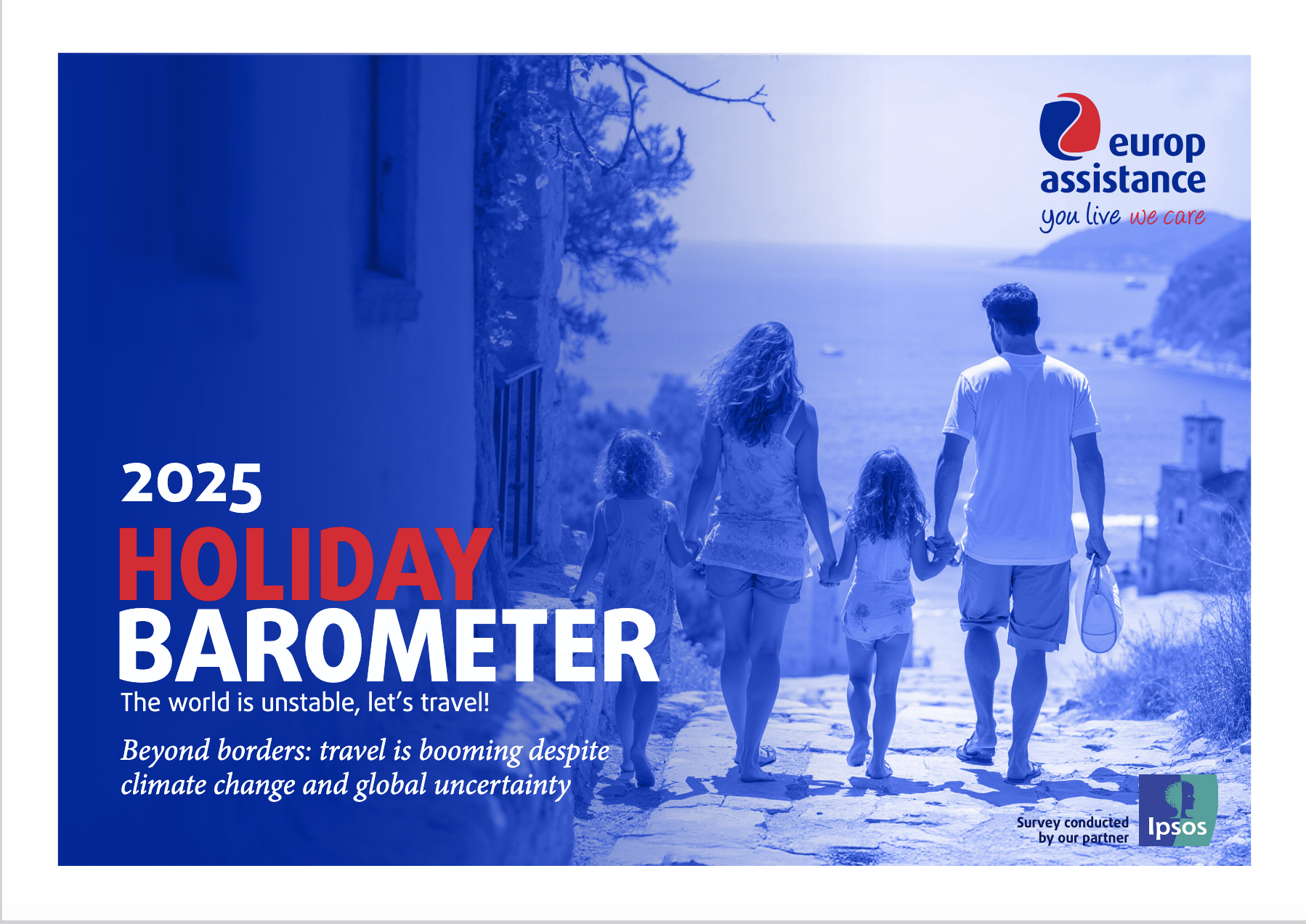The 24th edition of Europ Assistance’s Holiday Barometer, done by Ipsos France, reveals a record-breaking surge in travel intentions and a strong enthusiasm for exploring new destinations.
10 key learnings emerge from this study conducted in 23 countries:
1. Unprecedented travel intentions & enthusiasm, despite global uncertainties:
- Nearly 8 out of 10 Europeans (79%) and over 7 out of 10 Americans (71%) plan to travel between June and September this year, marking the highest levels ever measured since the barometer was established.
- UK (+27 pts vs 2015), Italy (+24 pts) and Spain (+20 pts) are the ones in which travel intentions during the summer have increased the most in 10 years.
- American travel intentions have surpassed pre-pandemic levels, reaching 69% for the USA (+8 pts versus 2016).
2. High interest in international travel:
- Interest in traveling abroad is growing in countries that usually prefer domestic trips: 36% of Italians and 35% of French now prefer international travel, up by 7 and 8 points from 2024.
3. Spain, Italy and France remain top 3 destinations:
- Seaside remains preferred in Europe (63%), but city trips gaining popularity (28%, +12 pts in 10 yrs).
- Asia and Africa becoming more attractive for European travelers.
- Japan favored by travelers from Asia & Oceania (main destination for 16% of Australians and 38% of Singaporeans).

4. Favourite aspects of traveling:
- Relaxing, escaping from daily routine and stress
- Exploring new places (cities, landscapes and attractions)
- Making memories
- Particularly strong among 18-24 year-olds, especially in Europe (47%) and North Asia (52%)
- Aligning with the «new nihilism» trend identified in the Ipsos Global Trends study, sentiment that individuals feel it’s better to live for today, either because tomorrow is uncertain or because they feel powerless to take control of their future
- Experiencing different cultures, local traditions and customs
- Unlike other countries, Japanese prioritize “enjoy my home” as a top vacation driver (40%). “Come together as family” ranks low in Japan (35% against 50% on avg everywhere else, up to 62% in Malaysia)
5. Financial constraints are the main barrier to travel
- Especially in North Asia and North America.
- A significant gap exists between high and low earners in Europe: 89% of high-income individuals intend to travel this summer (44% planning more than one trip), compared to just 68% of low-income individuals (22% planning more than one trip).
- However, those planning to travel indicate they are dedicating more budget to their holidays.
6. Safety has become a key criterion in choosing destinations:
- Safety is a top priority for 1 in 3 North Amercians (+9 pts vs 2021)
7. Geopolitical climate impacts travel decisions:
- In 17 of the 23 countries surveyed, the US was ranked in the top 5 destinations they could avoid due to political climate (among travelers considering the political climate influential in their destination choice).
- In 2024, this was true for 8 of the 21 countries surveyed.
8. Environmental concerns take a backseat:
- Plane-usage is at a 4-year high, in Europe & North America, surpassing cars.
- Despite growing awareness of environmental issues, they have a minimal impact on travel decisions.

9. Natural disasters impact travel destinations:
- 4 out of 10 European travelers worry about experiencing a natural disaster during their trip (vs 25% in 2022).
10. Role of digitalization and AI in holiday planning:
- 36% of travelers using online travel agencies like Expedia and Booking.com.
- Adoption is widespread across age groups:
- 43% of travelers under 35 rely on these channels
- 38% of those aged 35-54
- 30% of senior travelers over 55
- Even 25% of travelers over 65 use online booking tools.
- The younger generation is pioneering in exploring AI tools for holiday planning:
- 25% of respondents have already used or are open to using AI to plan their trips
- with 46% of those under 35 engaging with these technologies.
- In contrast, only 19% of travelers aged 35 and older would be ready to use AI, revealing a generational division in adoption.

